6 Advanced Robotics – Transforming Humanity: The Autonomous Systems Shaping Our Future (Mumm)
Student Learning Objectives
The student will gain knowledge of the concepts and framework related to the current and future trends of autonomous systems that will transform our society and way of life. The discussion will include autonomous systems’ current and future integration into human experiences and the human acceptance factor.
A Look Back in History and Humanity’s Desire to Integrate Technology
The first industrial revolution is said to have taken over a hundred years, yet the Information Revolution has only taken thirty years. How does a planet-wide revolution condense into a shorter timeframe? Is humankind equipped for this change, or are we failing to recognize the masses seemingly being left behind? To answer these questions, we need to examine our desire to automate essential processes in food production, transportation, healthcare, and our workforce, to name a few.
The world is in simultaneous multiple revolutions for the first time in history. The fact that we are in an autonomous/robotic revolution at the same time as a biotech revolution is creating the ability for the fifth revolution to take hold faster than any other humankind changes in history. The ability to move into a true knowledge revolution with artificial intelligence, quantum technologies, virtual worlds, and self-organizing entities is harnessing a future humans may not be ready for, as historically, laws, policies, governance, leadership, and human wisdom have lagged behind humankind’s revolutions.
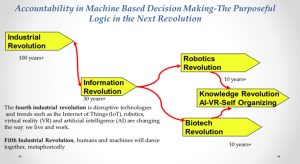
The fourth industrial revolution is characterized by disruptive technologies, and “trends such as the Internet of Things (IoT), robotics, virtual reality (VR), and artificial intelligence (AI) are changing the way modern people live and work. The integration of these technologies into manufacturing practices is known as Industry 4.0.” (Wigmore, 2024)
As humans and machines begin their metaphorical dance together, humanity must make many decisions on how to shape its current and future thoughts about the makeup of our societies, what constitutes productivity, and whether productivity is indeed the goal of human existence. Do we need to consider altering this thought process now that, for the most part, AI, robots, and processing machines will take over our productivity needs?
In the fifth industrial revolution, there are eight recognized unmanned autonomous systems: unmanned boats, unmanned air vehicles, unmanned submarines, unmanned surface vehicles, free-roaming humanoids, exoskeletons, nano biologics, and autonomous cyber systems. As all these systems begin to communicate together by integrating goal-seeking and acting as a singular system, the industry will witness the adoption of simplistic tasks into a fully integrated architecture. This complete integration is an issue today with minimal capabilities; autonomous architectures are outpacing policymakers’ and world leaders’ abilities to draft and approve policies, laws, and governance necessary for advanced technologies and autonomous systems.
As humans and machines integrate, what it means to be an employee or work at a job will change, and “Corporations need to consider the management of intelligent machine assets in many of the same ways we manage humans.” (Mumm & Brand, 2020) Human employees are trained, evaluated, and corrected via training and other means as work is accomplished. However, machines, AI simulations, and robots are considered “physical assets and are managed as such…a thinking machine is capable of choices, actions, and decision-making, much like that of its human counterpart. If a machine can make an autonomous decision or action, the behavior of the machine must be managed.” (Mumm & Brand, 2020) This infers that autonomous employees (AE) should also be held responsible for the outcomes of those decisions or actions.
As we move into the fifth industrial revolution, “training, monitoring, and development programs must be considered for managing the AE in many of the same ways we manage human employees.” (Mumm & Brand, 2020)
Our Current Reality: Is It the Jetson’s Utopia, or Are We Closer to the 1980s?
In the 1960s, a futuristic cartoon known as The Jetsons offered us a glimpse of what the future might look like. Decades after the television show went off the air, the world still uses this show as the benchmark for our technology timeline. Matt Novak further discussed this idea in a September 19, 2012 article, as he stated, “Although it was on the air for only one season, The Jetsons remains our most popular point of reference when discussing the future.” Novak, 2012)

The Jetsons featured flying cars, robot housemaids, and a carefree lifestyle that allowed machines to do most of the work, with humans thinking. The Jetsons’ eutopia did not include pollution, as the world, through television, indicated that this new eutopia would be one without issues or challenges. The reality sixty-four years after The Jetsons leaves much to be desired compared to the television show. Humanity hasn’t quite achieved the Jetson’s level of technological eutopia. However, we have moved far beyond the 1980s in our technology and how autonomous systems can integrate into our human world.
Agriculture – Are We Done with Manual Field Labor?
Consider that in 1876, ” George Lambert patented the first mechanical corn planter. Case produces its first traction engine, which provided power to the rear wheel and the belt pulley while being the first to address the problems of boiler explosions and sparks” (Staff, 2023).
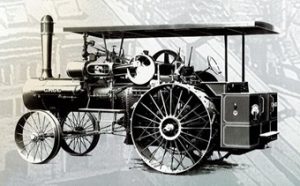
It has taken technology over one hundred fifty years to get to “today’s precision age that automatically guides high-powered tractors and combines. Farm equipment has evolved through the ages to meet the earth’s ever-growing population’s food, fuel, and clothing needs.” (Staff, 2023)
As we move into the 20th century, most sectors of the economy have a strong desire for and need for autonomous systems. Yet, technology growth is not evenly distributed across sectors or populations. Historically, the farming industry has pushed to produce more products with less land and, in less time, with a smaller workforce. The difficulty of obtaining and retaining farm labor has created a need for autonomous farm equipment. The ability of the average family-owned farm to integrate this autonomous equipment can be a challenge, as many factors affect the equipment’s ability to operate effectively and safely. As depicted, many systems must communicate and be custom-integrated into a farm environment.
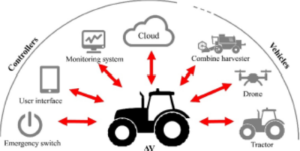
The world’s population is more than “three times larger than in the mid-twentieth century. The global human population reached 8.0 billion in mid-November 2022 from an estimated 2.5 billion people in 1950, adding 1 billion people since 2010 and 2 billion since 1998.” (Global Issues: Population,” 2024). There is now a recognition that “robotic farming will play an undeniably significant role in future sustainable agriculture.”(Roshanianfard, Noguchi, Okamoto, & Ishii, 2020)
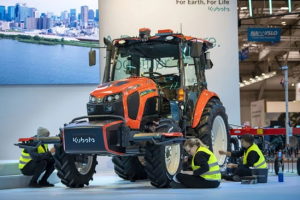
With pressure on the agricultural sector to produce more food for a growing population while accomplishing this with fewer workers and maintaining a profit, “the development of agricultural robot technology is the inevitable requirement of agriculture.” (Yucheng et al., 2021) Today’s agricultural equipment is being retrofitted for autonomous features and to gather data required to create purpose-built agrarian robots. This integration will not be without its challenges, including the fact that autonomous systems might develop processes that far exceed human abilities.
Defense Industry – Are Autonomous Systems the Way to Civilize the Uncivilized
The use of autonomous systems in warfare is well documented and continues to expand as conflicts arise. This increase in the use of autonomous systems is driving technological advances in both the civilian and military realms. With the addition of autonomous and unmanned systems on the battlefield, we should consider whether there is such a thing as a bloodless war. Do robots fighting on the battlefield somehow make an uncivilized activity more civil? If metal, plastic, and silicone are taking the punishment, does that potentially equate to less harm to humans? In reading the ancient book The Art of War urges that war should be avoided and that diplomacy is the preferred method for settling disputes. However, if war is unavoidable, “it should be fought strategically and psychologically to minimize damage, and the wasting of resources. Warfare should only be a last resort, and heading into battle is already admitting defeat.” (“The Art of War,” 2023) The Art of War is based more on philosophy and military strategy in looking at the human cost; however, with robots fighting the war, the human toll is less. Does that mean humanity will accept the upheaval of war more easily because robots can be substituted for the role of a warfighter?
The integration of multiple autonomous systems for missions is being witnessed now in the Israel and Hamas conflict. Israel’s arsenal includes a four-legged dog robotic solution that carries a rolling, flying sensor package for intelligence reconnaissance and surveillance missions. This integrated package can “enter dangerous places and minimize human casualties, making it an invaluable asset on the modern battlefield. In an evolving warfare environment, blending high-tech solutions with traditional methods is crucial, and the V60 excels at bridging that gap.” (Boguslavsky, 2024)
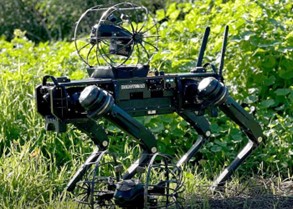
Meanwhile, as casualties mount in Ukraine, so does the pressure to achieve decisive battlefield advantages with fully autonomous weapons – robots that can choose, hunt down, and attack their targets all on their own without needing any human supervision (Dawes, 2023).
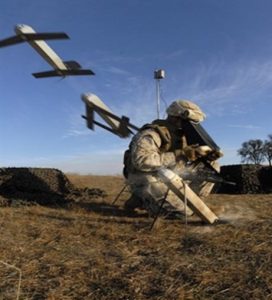
Currently, semi-autonomous weapons, like loitering munitions that track and detonate themselves on targets, require a “human in the loop.” The machines can recommend actions but require their operators to initiate them (Dawes, 2023). Autonomous architectures are outpacing policymakers’ and world leaders’ abilities to draft and approve policies, laws, and governance necessary for advanced technologies and autonomous systems.
Job growth in the drone and autonomous systems for the defense industry continues to grow with little indication of slowing down anytime soon. The ability to use and reuse consumer-based autonomous systems by nation-states and organizations illustrates how this dual-use technology can move the consumer and the military markets quickly into a future that is not well regulated, controlled, or with proper laws, policies, or authorities documented, and enforceable by any one country or world governing body.
In a December 2021 article by James Dawes titled UN disagrees on ‘killer robot’ ban as nations pour billions into autonomous weapons research,” Dawes offers the concept that by failing to put limits on autonomous weapons, humanity is giving up its final stopgap measure “against war crimes and atrocities: the international laws of war…the idea that people can be held accountable for their actions even during wartime, that the right to kill other soldiers during combat does not give the right to murder civilians.” (Dawes, 2023)
The International Committee of the Red Cross, the custodian of international humanitarian law, insists that commanders’ and operators’ legal obligations “cannot be transferred to a machine, algorithm, or weapon system.” Right now, human beings are held responsible for protecting civilians and limiting combat damage by ensuring that the use of force is proportional to military objectives (Dawes, 2023).
The question of ethics and the future of humanity has been at the forefront with the ease and use of autonomous systems. The ubiquitous nature of the technology and the ease of obtaining the needed hardware and software to build these machines give a group of high school students similar technological capabilities as the large, industrialized nations. When nations, warring factions, or terrorist organizations send robots to kill humans and other robots, is humanity simply attempting to make an uncivilized activity civilized?
Workplace Changes – The New Robotic Employee
Car manufacturers are known for their use of automation in the production of automobiles. The BMW factory in South Carolina is moving to the next generation of automation as it begins to integrate humanoids into its workforce.
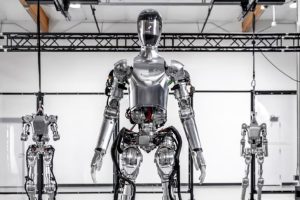
The company known as Figure has created what it says “is the first-of-its-kind AI Robotics company bringing a general purpose humanoid to life.” “Figure,” 2024). The founder and CEO of Figure, Brent Abcock, stated, “We met the [BMW] team about nine months ago,” he continues. “They’ve integrated a lot of robotics into that [Spartanburg] plant. They wanted us to help solve further automation issues with more dexterous and mobile manipulation.”(Blain, 2024)
One issue of moving from human workers to automation is the need to retool, train, and integrate the humanoid. However, Figure indicated that “useful work in the real world is Figure’s sole focus. General-purpose robots are designed in humanoid form so they can directly take over physical tasks performed by humans, using the same tools and access methods.” (Blain, 2024) That allows humans and machines to work at the same stations, using the same tools, saving some of the standard technology integration start-up costs.
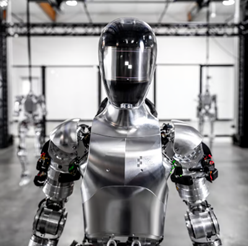
For many years, Amazon has used robots and AI to operate efficiently and effectively. Amazon is now moving into a new phase of humanoid robotics that will work alongside their human counterparts. Amazon states, “Ensuring robotics are collaborative and support employees are central to how we design or deploy systems like Sequoia and Digit. Over the last ten years, we’ve rolled out hundreds of thousands of robotics systems while creating hundreds of thousands of new jobs.” (Dresser, 2023)
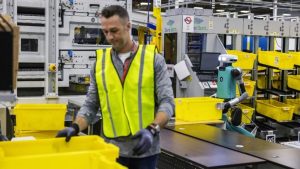
Indeed, Amazon is at the forefront of the fifth industrial revolution, allowing humans and machines to operate in symbiotic relations for the good of all. Amazon is “employing over 750,000 robots to work alongside its employees. The world’s second-largest private employer employs 1.5 million people. While that’s a lot, it’s a decrease of over 100,000 employees from the 1.6 million workers it had in 2021.” (Naysmith, 2024)
Amazon is a frontrunner in using advanced AI and robotics. However, there appears to be a broader trend for adopting and accepting robotics integration into the workforce that can quickly reshape industries and labor markets. This shift needs careful oversight, as organizations that rely on a “human to make an intelligent decision have some oversight in place of employees…an equally in-depth system of management is called for when managing intelligent machines, focusing on differences in the decision-making and task completion methodology.” (Mumm & Brand, 2020)
In Pasadena, California, the new CaliExpress by Flippy is opening soon. It is reported that customers can order a meal from a kiosk and then watch robots grill their burgers, fry their French fries, and serve the meal, all without substantial human intervention.

John Miller, a board member of Miso Robotics and the creator, states, “To our knowledge, this is the first operating restaurant where both ordering and every single cooking process are fully automated…The marriage of these various technologies to create the most autonomous restaurant in the world is the culmination of years of research, development, and investment.” (Blain, 2023)
Like fast food restaurants and production line activities, landscaping tasks can be highly repetitive and labor-intensive. Lawnmowing, in particular, because the same task has been done repeatedly at the exact location for years. The Electric Sheep company now “partner(s) with culture-driven landscaping companies, empowering its people to do more of what they already do well.” (“Electric Sheep,” 2024). Electric Sheep aims to “help us automate the unstructured world. (“Electric Sheep,” 2024)
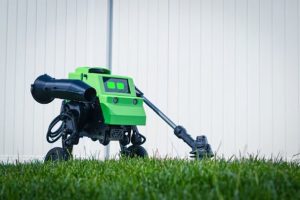
The company offers a line of robotic landscaping tools that “use deep learning to solve autonomy, eliminating costly robotic stacks that need intricate mapping and rules. The result is a data-driven algorithmic solution that thinks like a brain” (Electric Sheep, 2024). Electric Sheep offers the opportunity for AI to learn in real-world settings, “accelerating the path to AI for the physical world.” “Electric Sheep” 2024). The corporate vision is to have robots and humans work side by side in the landscaping industry.

Integrating humans and machines into the workforce quietly moves forward as the fifth revolution takes hold. The challenge of humanity is preparing the workforce and the world for this change.
Healthcare and The Robotic Revolution
Many decades ago, having a doctor make a house call was an ordinary course of their duties; now, it is a rarity. Then, the era of hospital and doctor’s office visits, along with the influence of medical insurance providers, changed the landscape of the healthcare industry to what it is today. The goal of integrating big data, AI, advanced technologies, and robotics is to revolutionize the healthcare industry in ways that most people have not considered and that some may not be comfortable with for their daily and long-term care.
Looking at the latest developments in AI applications and how they impact industries such as healthcare, autonomous vehicles, and robotics, one must also look at the opportunities and challenges companies and entrepreneurs face in developing AI applications. Simultaneously, they must attempt to predict some of the disruptive and transformative impacts that AI could have on the business sector, the economy, and society in the future.
In April of 2021, Nvidia estimated that ‘ by 2030, there will be a shortage of 15 million healthcare workers.” Nvidia is working on solving some of these issues as they are”creating a virtual AI nurse with which patients can interact. So far, we’ve worked with hospitals to create a prototype that can pre-assess up to 400 diseases and refer patients to the relevant hospital department” (De Pacina, 2024). In March 2024, it was announced that”Nvidia has collaborated with Hippocratic AI to develop generative AI” agent” for healthcare that purportedly outperforms human nurses on video calls while being more cost-effective” (De Pacina, 2024)

Extensive testing has been performed by over “1,000 nurses and 100 physicians; the bots have reportedly shown superior performance compared to human nurses and other rivals, including OpenAI’ss GPT-4 and the LLaMA 2 70B Chat” (De Pacina, 2024). The accuracy of the AI and the financial implications of this system need to be weighed against a human nurse’s experience, emotional support, and holistic approach to patient care. While a machine might technically be correct in diagnosing, weighing other factors, such as the patient’s emotional well-being, might be more difficult for the AI agent to integrate into its technical calculations.
Nano-biologics is one of the newer robotic applications. It might take some getting used to it, as the thought of injecting a micro-sized robot into our bodies as therapy might seem like science fiction. However, it is a reality today as antimicrobial-resistant bacteria are becoming more pervasive and difficult to eliminate. According to the CDC, “nearly 5 million deaths worldwide in 2019 with more than 2.8 million people in the US coming down with some kind of treatment-resistant infection every year”. (Franco, 2024) These new”superbugs” are taxing our current protocols on how to deal with them as”germs continue to evolve to evade our ways of killing them, scientists are racing to expand the arsenal we can use against them” (Franco, 2024). A promising treatment is using a bacteria-shredding micromotor that offers light-activated propulsion.

These new” four spikes on a new nanocrystal developed in Spain spin up under light and move through a liquid, blasting any bacteria unfortunate to be in their path. The development could spell trouble for bacteria that resist traditional drug treatments” (Franco, 2024)
Science fiction will meet reality and spin headlong into ethics, religion, and possible class warfare, as the ability to use AI and robotics allows humans to live far beyond our ancestor’s life span. Imagine having a fully functioning brain with an injured or diseased body; the life limitation is in the body itself, not the brain’s ability to function, so why not just replace the body and allow the person to continue to live? The solution may lay with a company known as Brainbridge, which is reported to be “the world’s first revolutionary concept for head transplant system, employing cutting-edge robotics and artificial intelligence to ensure successful head and face transplantation procedures with improved outcomes and faster recoveries” Head Transplant System” 2024). BrainBridge’s mission is to” pioneer transformative medical interventions that extend the boundaries of human health and recovery” “Head Transplant System,” 2024).
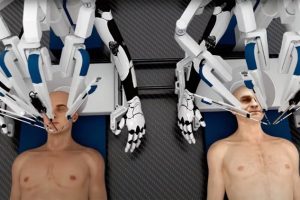
BrainBridge is building what they say is a”groundbreaking device that will represent a landmark achievement in the fields of neuroscience, human engineering, and artificial intelligence” The entire process is thought out from preparation of the patience, the actual surgery, and into the recovery stage as “The BrainBridge Head Band, equipped with a Brain-Computer Interface, allows patients to communicate their needs during recovery, control devices, and execute tasks independently using their thoughts, enhancing autonomy and quality of life.” (“Head Transplant System,” 2024)
A New Era of Entertainment Begins
During the Roman Empire, there were chariot races. The Industrial Revolution offered auto racing and almost any type of motorsport humans could invent, including air races. In the fifth revolution, the autonomous industry is seeing a quick shift into the world’s entertainment medium.
Drone races are a sport that is not only socially accepted but also big business, even for the sports betting industry. In August 2021, Yogonet, Gaming News stated, “The Drone Racing League (DRL), the global, professional drone racing property, today announced a deal with DraftKings Inc. to make the sports technology and entertainment company an Official Sports Betting Partner of DRL.” (“The Drone Racing League, DraftKings announce sports betting agreement,” 2024)
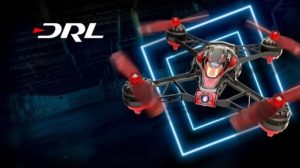
DLR President Rachel Jacobson stated, “We’re thrilled to partner with DraftKings to transform our high-speed race competition into the ultimate sport to bet on.” (“The Drone Racing League, DraftKings announce sports betting agreement,” 2024)
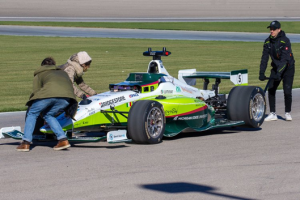
Auto racing has been a pastime for several decades, with advanced technology being developed for the cars and drivers skilled enough to drive over 200 mph. The auto racing industry is now taking the next steps in its evolution into the autonomous vehicle racing arena. A project known as the Indy Autonomous Challenge stated, “We’re not just adapting to the evolving landscape of autonomous technology; we’re actively shaping it. By conquering the challenges of high-speed mobility, we’re crafting solutions that promise to revolutionize highway travel, ensuring safety, efficiency, and a new paradigm in autonomous driving. (“CES 2024 RECAP: Charting The Future of Autonomous Mobility,” 2024)
The sport evolved through technological and physics advances as air races became popular. Now, it has its league, television rights, and a worldwide following in the millions. This desire for humans to fly is manifesting in the jet suit industry, and in February 2024, the world’s first jet suit races took place in Dubai, United Arab Emirates.

Gravity Industries, the firm that put on the jet suit races, indicated that “the closest analogy would be that dream of flying … and then go wherever your mind is taking you,”

Gravity has been in the spotlight for many years for its jet suit technology, including when “Gravity previously drew worldwide attention when it equipped one of its jet suits on a U.K. Royal Marine, who landed on a ship at sea several years ago” (Gambrell, 2024)
The entertainment industry is continuously remaking itself according to what society finds riveting and willing to spend their time and money on. The old entertainment standards, such as a deck of cards or a board game, are still available and sell in incredible numbers each year. However, it is hard to beat the speed, excitement, technology, and money in the new entertainment mediums. These new entertainment venues will be challenging to win when you consider the ability to watch live races at the Indianapolis Speedway with autonomous cars, drone races, or jet-suit races. Who would not want to fly in a jet suit? What an adrenaline rush, and how exciting it is to see humans fly. It does take a little of the thrill out of winning at gin-rummy.
Conclusions
Humankind’s desire to automate, produce more, and live a richer, more meaningful existence is now transforming its very nature with autonomous systems. How we work, play, live, learn, and even take care of our health is impacted by autonomous technologies. Yet, many of these technologies use AI, self-learning, and some form of quantum computing to become self-sufficient and complete the assigned tasks. This creates ethical, legal, and moral challenges that are not being addressed in the speed and manner required to ensure this technology supports humankind in the future. The possibility of widening the technology gaps in advancing nations appears to be dismissed through the concept that now, these nations can leapfrog into the future through autonomy. Although these concepts might have good intentions, even the most advanced nations cannot keep up with the laws, policies, ethics, regulations, and leadership required to integrate and successfully implement autonomous systems for the good of all involved.
Questions
- Can the human evolution of purpose, work, and creativity survive and thrive in the fifth industrial revolution?
- List three robotic interactions you have in your daily life and how these interactions help or hinder your life goals.
- How would you see your life in five years? Do your career choices match where the world is going or only where the world has been historically?
- Can the integrated world of autonomous systems and humankind co-exist in its current form? If so, can you name three ways the use/misuse of technologies can be mitigated through laws, policies, and governance?
- Describe what your daily life is like in the fifth revolution. How has it changed since 2020?
References
The Art of War. (2023). Retrieved from https://education.nationalgeographic.org/resource/art-war/
Blain, L. (2023). A fully autonomous restaurant is set to open in Pasadena. Retrieved from https://newatlas.com/technology/miso-robotics-caliexpress-flippy-ai-restaurant/?utm_source=New+Atlas+Subscribers&utm_campaign=ca2167d714-EMAIL_CAMPAIGN_2023_12_20_02_31&utm_medium=email&utm_term=0_65b67362bd-ca2167d714-%5BLIST_EMAIL_ID%5D
Blain, L. (2024). Figure’s humanoid robots are about to enter the workforce at BMW. Retrieved from https://newatlas.com/robotics/figure-bmw-humanoid/?utm_source=New+Atlas+Subscribers&utm_campaign=845021e479-EMAIL_CAMPAIGN_2024_01_18_02_41&utm_medium=email&utm_term=0_65b67362bd-845021e479-%5BLIST_EMAIL_ID%5D
Boguslavsky, E. (2024). Robotican to Distribute Ghost Robotics’ Vision 60 Quadruped Unmanned Ground Vehicle in Israel. Retrieved from https://www.israeldefense.co.il/en/node/61210
CES 2024 RECAP: Charting The Future of Autonomous Mobility. (2024).
Dawes, J. (2023). War in Ukraine accelerates global drive toward killer robots. The Conversation. Retrieved from https://theconversation.com/war-in-ukraine-accelerates-global-drive-toward-killer-robots-198725
De Pacina, M. (2024). Nvidia creates $9-an-hour AI ‘agents’ that outperform human nurses. Retrieved from https://nextshark.com/nvidia-ai-agents-outperform-human-nurses
Dresser, S. (2023). Amazon announced two new ways in which it’s using robots to assist employees and deliver to customers. Retrieved from https://www.aboutamazon.com/news/operations/amazon-introduces-new-robotics-solutions
The Drone Racing League, DraftKings, announces the sports betting agreement. (2024). Retrieved from https://www.yogonet.com/international/news/2021/01/08/55997-the-drone-racing-league–draftkings-announce-sports-betting-agreement
Electric Sheep. (2024). Retrieved from https://sheeprobotics.ai/
Figure. (2024). Retrieved from https://www.figure.ai/
Franco, M. (2024). Light-activated propulsion spins bacteria-shredding micromotors. Retrieved from https://newatlas.com/medical/bacteria-resistant-nanocrystal-silver-light/?utm_source=New+Atlas+Subscribers&utm_campaign=6994ffd85a-EMAIL_CAMPAIGN_2024_04_18_01_44&utm_medium=email&utm_term=0_65b67362bd-6994ffd85a-%5BLIST_EMAIL_ID%5D
Global Issues: Population. (2024). Retrieved from https://www.un.org/en/global-issues/population#:~:text=Our%20growing%20population,and%202%20billion%20since%201998.
Head Transplant System. (2024). Retrieved from https://brainbridge.tech/
Mumm, D. H. C., & Brand, K. (2020). Defining and managing the artificial employee and integrating an artificial workforce. Paper presented at the European Group for Organizational Studies-Colloquia 2020. https://www.egos.org/
Naysmith, C. (2024). Amazon Grows To Over 750,000 Robots As World’s Second-Largest Private Employer Replaces Over 100,000 Humans. Retrieved from https://finance.yahoo.com/news/amazon-grows-over-750-000-153000967.html?guccounter=1&guce_referrer=aHR0cHM6Ly93d3cuZ29vZ2xlLmNvbS8&guce_referrer_sig=AQAAAFFhvh2oHeGUkfzutbBxjo04J6FL5Mb4oZKCsOWu4ApyGDBUbr6gqWqFsAS2NiWNdYhRIF8fRXyXqXQA2IwQyVBbxfaJ2Vfs6BH3UYLOQC-7jf936W6pZ-UY-Cl8xNNb-vohggyvShGRyt5bu0lK0nHMu_ww2sNprNuXPFnbO5w9
Novak, M. (2012). 50 Years of the Jetsons: Why The Show Still Matters. Smithsonian Magazine. Retrieved from https://www.smithsonianmag.com/history/50-years-of-the-jetsons-why-the-show-still-matters-43459669/
Roshanianfard, A., Noguchi, N., Okamoto, H., & Ishii, K. (2020). A review of autonomous agricultural vehicles (The experience of Hokkaido University). Journal of Terramechanics, 91, 155-183. doi:10.1016/j.jterra.2020.06.006
Staff, F. E. (2023). Timeline of Ag Equipment’ Firsts.’ Farm Equipment. They were retrieved from https://www.farm-equipment.com/articles/4269-timeline-of-ag-equipment-firsts#:~:text=1702,seeds%20pulled%20by%20a%20horse.
Wigmore, I. (2024). Fourth Industrial Revolution. Retrieved from https://www.techtarget.com/whatis/definition/fourth-industrial-revolution
Yucheng, J., Jizhan, L., Zhujie, X., Shouqi, Y., Pingping, L., & Jizhang, W. (2021). Development status and trend of agricultural robot technology. International Journal of Agricultural & Biological Engineering, 14(4), 1-19. doi:10.25165/j.ijabe.20211404.6821

